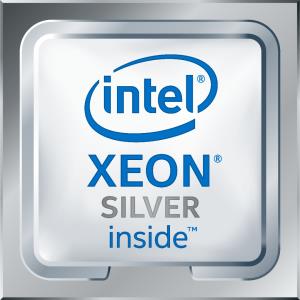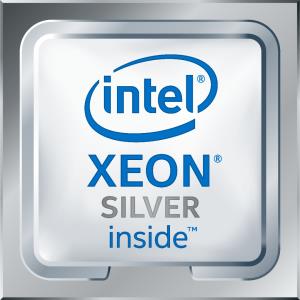-
ScreenMemoryWeightProcessorHard DiskSSDScreenResolutionConnectivityMemoryCaseOSScreenTypeSpeed BlackSpeed ColourModelProcessor SpeedForm FactorInternal / ExternalPort CountUplink / mediaMounting
- View All Specs
Bundles
Related products
Product Information
Intel® Trusted Execution Technology
Intel® Trusted Execution Technology for safer computing is a versatile set of hardware extensions to Intel® processors and chipsets that enhance the digital office platform with security capabilities such as measured launch and protected execution. It enables an environment where applications can run within their own space, protected from all other software on the system.
Intel® Virtualization Technology for Directed I/O (VT-d)
Intel® Virtualization Technology for Directed I/O (VT-d) continues from the existing support for IA-32 (VT-x) and Itanium® processor (VT-i) virtualization adding new support for I/O-device virtualization. Intel VT-d can help end users improve security and reliability of the systems and also improve performance of I/O devices in virtualized environments.
Intel® Virtualization Technology (VT-x)
Intel® Virtualization Technology (VT-x) allows one hardware platform to function as multiple “virtual” platforms. It offers improved manageability by limiting downtime and maintaining productivity by isolating computing activities into separate partitions.
Intel® 64
Intel® 64 architecture delivers 64-bit computing on server, workstation, desktop and mobile platforms when combined with supporting software.¹ Intel 64 architecture improves performance by allowing systems to address more than 4 GB of both virtual and physical memory.
Cache
CPU Cache is an area of fast memory located on the processor. Intel® Smart Cache refers to the architecture that allows all cores to dynamically share access to the last level cache.
Intel® AES New Instructions
Intel® AES New Instructions (Intel® AES-NI) are a set of instructions that enable fast and secure data encryption and decryption. AES-NI are valuable for a wide range of cryptographic applications, for example: applications that perform bulk encryption/decryption, authentication, random number generation, and authenticated encryption.
Intel® Turbo Boost Technology
Intel® Turbo Boost Technology dynamically increases the processor's frequency as needed by taking advantage of thermal and power headroom to give you a burst of speed when you need it, and increased energy efficiency when you don’t.
Max Turbo Frequency
Max Turbo Frequency is the maximum single-core frequency at which the processor is capable of operating using Intel® Turbo Boost Technology and, if present, Intel® Turbo Boost Max Technology 3.0 and Intel® Thermal Velocity Boost. Frequency is typically measured in gigahertz (GHz), or billion cycles per second.
Execute Disable Bit
Execute Disable Bit is a hardware-based security feature that can reduce exposure to viruses and malicious-code attacks and prevent harmful software from executing and propagating on the server or network.
Intel® Hyper-Threading Technology
Intel® Hyper-Threading Technology (Intel® HT Technology) delivers two processing threads per physical core. Highly threaded applications can get more work done in parallel, completing tasks sooner.
Intel vPro® Platform Eligibility
The Intel vPro® platform is a set of hardware and technologies used to build business computing endpoints with premium performance, built-in security, modern manageability and platform stability.
Intel® VT-x with Extended Page Tables (EPT)
Intel® VT-x with Extended Page Tables (EPT), also known as Second Level Address Translation (SLAT), provides acceleration for memory intensive virtualized applications. Extended Page Tables in Intel® Virtualization Technology platforms reduces the memory and power overhead costs and increases battery life through hardware optimization of page table management.
Intel® Optane™ Memory Supported
Intel® Optane™ memory is a revolutionary new class of non-volatile memory that sits in between system memory and storage to accelerate system performance and responsiveness. When combined with the Intel® Rapid Storage Technology Driver, it seamlessly manages multiple tiers of storage while presenting one virtual drive to the OS, ensuring that data frequently used resides on the fastest tier of storage. Intel® Optane™ memory requires specific hardware and software configuration.
Enhanced Intel SpeedStep® Technology
Enhanced Intel SpeedStep® Technology is an advanced means of enabling high performance while meeting the power-conservation needs of mobile systems. Conventional Intel SpeedStep® Technology switches both voltage and frequency in tandem between high and low levels in response to processor load. Enhanced Intel SpeedStep® Technology builds upon that architecture using design strategies such as Separation between Voltage and Frequency Changes, and Clock Partitioning and Recovery.
Intel® Speed Shift Technology
Intel® Speed Shift Technology uses hardware-controlled P-states to deliver dramatically quicker responsiveness with single-threaded, transient (short duration) workloads, such as web browsing, by allowing the processor to more quickly select its best operating frequency and voltage for optimal performance and power efficiency.
Instruction Set Extensions
Instruction Set Extensions are additional instructions which can increase performance when the same operations are performed on multiple data objects. These can include SSE (Streaming SIMD Extensions) and AVX (Advanced Vector Extensions).
Intel® Turbo Boost Max Technology 3.0
Intel® Turbo Boost Max Technology 3.0 identifies the best performing core(s) on a processor and provides increased performance on those cores through increasing frequency as needed by taking advantage of power and thermal headroom.
Max # of UPI Links
Intel® Ultra Path Interconnect (UPI) links are a high speed, point-to-point interconnect bus between the processors, delivering increased bandwidth and performance over Intel® QPI.
# of AVX-512 FMA Units
Intel® Advanced Vector Extensions 512 (AVX-512), new instruction set extensions, delivering ultra-wide (512-bit) vector operations capabilities, with up to 2 FMAs (Fused Multiply Add instructions), to accelerate performance for your most demanding computational tasks.
Intel® Volume Management Device (VMD)
Intel® Volume Management Device (VMD) provides a common, robust method of hot plug and LED management for NVMe-based solid state drives.
Mode-based Execute Control (MBEC)
Mode-based Execute Control can more reliably verify and enforce the integrity of kernel level code.
Intel® Transactional Synchronization Extensions
Intel® Transactional Synchronization Extensions (Intel® TSX) are a set of instructions that add hardware transactional memory support to improve performance of multi-threaded software.
| Processor | |
| Processor manufacturer | Intel |
| Processor generation | 1st Generation Intel© Xeon© Scalable |
| Processor model | 4116 |
| Processor base frequency | 2.1 GHz |
| Processor family | Intel Xeon Silver |
| Processor cores | 12 |
| Processor socket | LGA 3647 (Socket P) |
| Component for | Server/workstation |
| Processor lithography | 14 nm |
| Processor threads | 24 |
| Processor operating modes | 64-bit |
| Processor boost frequency | 3 GHz |
| Processor cache | 16.5 MB |
| Processor cache type | L3 |
| Thermal Design Power (TDP) | 85 W |
| Box | Yes |
| Cooler included | Yes |
| Stepping | M0 |
| Processor codename | Skylake |
| Processor code | SR3HQ |
| Processor ARK ID | 120481 |
| Memory | |
| Maximum internal memory supported by processor | 768 GB |
| Memory types supported by processor | DDR4-SDRAM |
| Memory clock speeds supported by processor | 2400 MHz |
| Memory channels | Hexa-channel |
| ECC | Yes |
| Graphics | |
| On-board graphics card | No |
| Features | |
| Execute Disable Bit | Yes |
| Market segment | Server |
| Maximum number of PCI Express lanes | 48 |
| PCI Express slots version | 3.0 |
| Supported instruction sets | SSE4.2, AVX, AVX 2.0, AVX-512 |
| Scalability | 2S |
| Embedded options available | Yes |
| PCI Express CEM revision | 3.0 |
| Export Control Classification Number (ECCN) | 5A992C |
| Commodity Classification Automated Tracking System (CCATS) | G077159 |
| Processor special features | |
| Intel© Hyper Threading Technology (Intel© HT Technology) | Yes |
| Intel© Turbo Boost Technology | 2.0 |
| Intel© AES New Instructions (Intel© AES-NI) | Yes |
| Enhanced Intel SpeedStep Technology | Yes |
| Intel Trusted Execution Technology | Yes |
| Intel© Speed Shift Technology | Yes |
| Intel© Transactional Synchronization Extensions | Yes |
| Intel VT-x with Extended Page Tables (EPT) | Yes |
| Intel TSX-NI | Yes |
| Intel 64 | Yes |
| Intel Virtualization Technology (VT-x) | Yes |
| Intel Virtualization Technology for Directed I/O (VT-d) | Yes |
| Intel TSX-NI version | 1.00 |
| Conflict-Free processor | Yes |
| Intel Turbo Boost Max Technology 3.0 | No |
| Intel© OptaneT Memory Ready | No |
| AVX-512 Fused Multiply-Add (FMA) units | 1 |
| Intel© Volume Management Device (VMD) | Yes |
| Mode-based Execute Control (MBE) | Yes |
| Intel© vProT Platform Eligibility | Yes |
| Operational conditions | |
| Tcase | 76 øC |
| Technical details | |
| Launch date | Q3'17 |
| Processor cache | 16896 KB |
| Product type | Processor |
| Status | Launched |
| Maximum memory | 768 GB |
| Processor brand name | Intel Xeon Silver Intel Xeon Silver Processor |
| Supported memory types | DDR4-SDRAM |
| Last change | 63903513 |
| Product family | Intel Xeon Processors |
| Intel© Speed Shift Technology version | 1.00 |
| Intel© Volume Management Device (VMD) version | 1.00 |
| Memory speed (max) | 2400 MHz |
| Mode-based Execute Control (MBE) version | 1.00 |
| Number of UPI links | 2 |
| Servicing status | ESU Notification Issued |
| End of servicing updates date | Sunday, December 31, 2023 |
| Logistics data | |
| Harmonized System (HS) code | 85423119 |
| Packaging data | |
| Package width | 43 mm |
| Package depth | 137 mm |
| Package height | 112 mm |
| Package weight | 200 g |
| Package type | Retail box |
| Weight & dimensions | |
| Processor package size | 76mm x 56.5mm |
| Other features | |
| Maximum internal memory | 768 GB |
| Maximum internal memory | 786432 MB |
| Warranty | |
| Base Warranty | Non Non |













